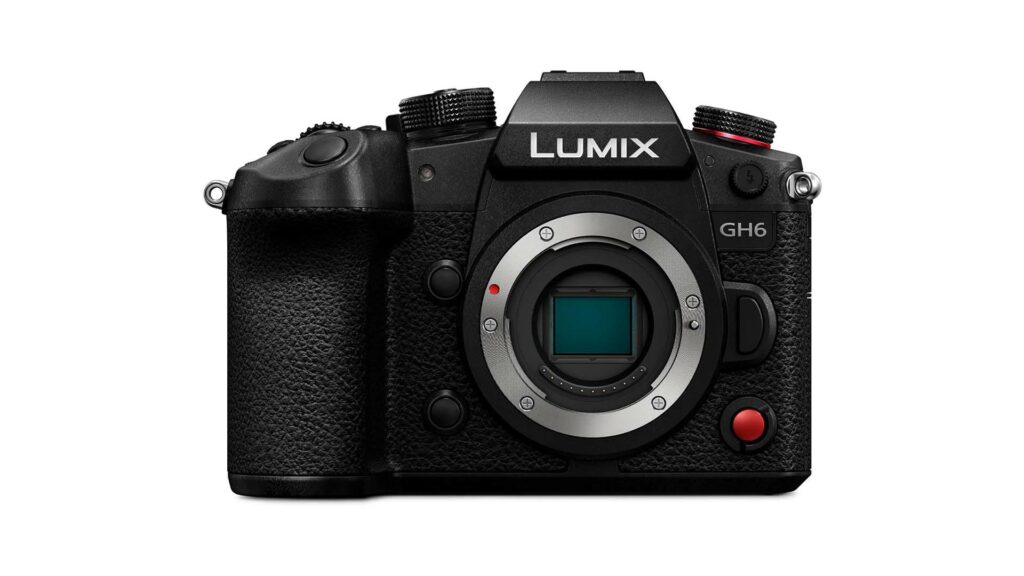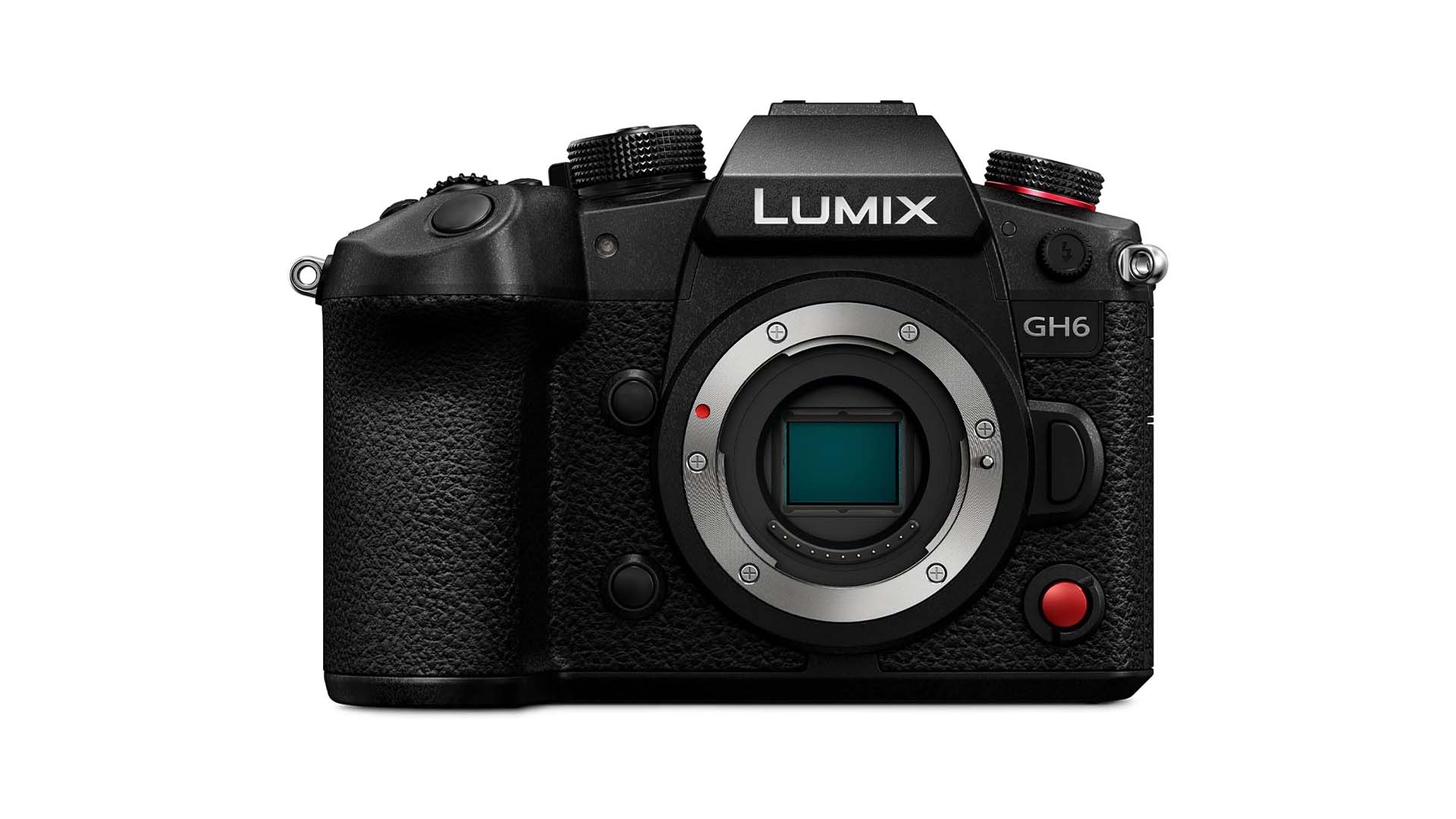The mirrorless filmmaking world has increasingly focused on full-frame cameras since the emergence of the GH Lumix series. However, the Panasonic Lumix GH6 proves that the Micro Four Thirds sensor format still holds its ground. Despite its small size and lightweight design, the GH6 packs an impressive array of video options and delivers excellent image quality. Moreover, it offers superb handling, image stabilization, and perhaps the best contrast-based autofocus among Panasonic cameras. Additionally, it functions as a dependable stills camera.
Pros
- Offers a vast range of video options
- Allows for unlimited recording times
- Provides excellent image stabilization
- Comes at a relatively affordable price
- Features a multi-angle tilt-and-swivel screen
- Boasts great handling
Cons
- Autofocus still lags the best
- Larger and heavier compared to the GH5 II
- Some features are not available until a firmware update is applied
| Aspect | Details |
|---|---|
| Overview | The Panasonic Lumix GH6 is the true main course for filmmakers seeking a small camera with huge creative potential. |
| Features | It’s the flagship in Panasonic’s Lumix G range, boasting a 25.2MP sensor, 5.7K video at 60fps, Apple ProRes 422 HQ recording, 7.5 stops of in-body image stabilization, 4-channel XLR audio recording, and a versatile tilt-able monitor. |
| Comparison | While full-frame cameras excel in low light and dynamic range, Micro Four Thirds cameras like the GH6 offer compactness and affordability. |
| Performance | The GH6 impresses with superb handling, thoughtful design, and a plethora of video options, making it suitable for most mirrorless movie makers. |
| Autofocus | Its contrast-based autofocus, though not as advanced as some competitors’, shows noticeable improvement over previous models like the GH5 II. |
| Conclusion | Panasonic’s most powerful Micro Four Thirds camera to date, the GH6 shines as the top choice for filmmakers and ranks among the best YouTube cameras available. |
Panasonic Lumix GH6: Price and Release Date
The Panasonic Lumix GH6 is currently available for purchase at a body-only price of $2,199 / £1,999 / AU$3,699. Alternatively, you can opt for the 12-60mm zoom lens kit, priced at $2,799 / £2,199 / AU$4,799.
Compared to its predecessor, the Panasonic Lumix GH5 II, the GH6 comes at a slightly higher price point. The GH5 II is priced at £1,499 / AU$2,499 for the body only, or £1,699 / AU$2,699 with the 12-60mm lens.
Furthermore, the GH6 surpasses the cost of the full-frame Panasonic Lumix S5, which is priced at $1,999 / £1,799 / AU$3,199. However, it is not the most expensive video-centric mirrorless camera from Panasonic; that title belongs to the Netflix-approved Panasonic Lumix S1H L-mount camera, which launched at $3,999 / £3,599 / AU$5,999 for the body only.
Competitively, the GH6 falls within the same price range as the Sony A7 IV ($2,499 / £2,400 / AU$4,299), Canon EOS R6 ($2,499 / £2,499 / AU$4,499), and Nikon Z6 II ($2,600 / £2,549 / AU$4,399), but may be slightly more affordable depending on your location.
Alternatively, the Blackmagic Pocket Cinema Camera 6K Pro presents an intriguing option at $2,495 / £2,254 / AU$3,935. However, it lacks certain features offered by the GH6, such as continuous tracking autofocus and functional stills shooting mode.
Consideration of whether to invest in the Panasonic Lumix GH6 or one of its competitors may also depend on potential discounts available during Black Friday camera deals. While the GH6 is relatively new to the market, previous models like the Lumix GH5 II have seen significant discounts during events like Amazon’s Prime Day sales. Therefore, waiting to explore Black Friday deals could be beneficial if you’re undecided.
Panasonic Lumix GH6: Design and Handling
The GH6’s body shape remains familiar, featuring a well-worn, DSLR-inspired design commonly found in Panasonic’s Lumix G series.
Comfortable Grip and Clear Viewfinder
It boasts a textured grip for the right hand and a clear OLED electronic viewfinder with 3.68 million dots, ensuring comfortable shooting even in bright weather conditions.
Weather Sealing and Durability
Sealed against dust and water ingress, the GH6 is built on a rugged magnesium alloy frame, withstanding tough conditions and temperatures as low as -10ºC/14ºF.
Intuitive Controls and Video Features
Thoughtfully positioned physical buttons, wheels, and dials offer ease of use. Additionally, a second video record button on the front and tally lights enhance functionality, especially for vlogging.
Flexible Touchscreen Design
The 3-inch touchscreen is highly flexible, allowing for flipping, twisting, and tilting, similar to the full-frame Panasonic Lumix S1H. This design facilitates shooting at various angles without obstructing cable attachments.
Compact and Lightweight Body
Despite its impressive specifications, the GH6 maintains a lightweight and compact body, weighing just 823g without a lens. The addition of a forced-fan cooling system adds slight bulk but doesn’t detract from its overall trim package.
Conclusion: Joyful Handling
Overall, the GH6’s design and handling provide a joyous shooting experience in diverse situations, making it a reliable tool for photographers and videographers alike.
Panasonic Lumix GH6: Features and Autofocus
Comprehensive Connectivity
The GH6 prioritizes connectivity, featuring a full-size HDMI Type-A port, headphone, and microphone ports, and XLR microphone compatibility via the optional DMW-XLR1 accessory.
Versatile USB-C Port
Its USB-C port offers a 10Gbps transfer speed and functions as a power supply, battery charger, and supports direct recording to a 2TB external SSD with a recent firmware update.
Dual Card Slots
Equipped with two card slots, one for standard SD cards and the other for CFexpress Type B cards, the GH6 caters to various recording needs, including demanding formats like ProRes. However, users should consider the cost of CFexpress cards when budgeting.
Advanced Autofocus System
The contrast-based DFD autofocus system offers automatic tracking of moving objects and recognizes human, animal, and eye/face subjects. While generally effective, occasional “pulse” effects during autofocus may occur, attributed to contrast detection. However, the GH6 performs better in this aspect compared to its predecessor, the GH5 II.
Autofocus Limiter Option
The new autofocus limiter feature allows users to set a range for autofocus, preventing unnecessary hunting, particularly useful for stationary subjects.
Manual Focus Capabilities
For filmmakers preferring manual focus, the GH6 provides a zoomed-in preview when adjusting the lens ring and supports focus peaking to identify sharp areas with contrasting colors.
Enhanced Image Stabilization
The GH6 boasts a 5-axis image stabilization system with an upgraded algorithm, offering up to 7.5 stops of correction. This improvement enables handheld shooting in High-Resolution mode and ensures smooth motion capture for both photography and videography, akin to gimbal-like steadiness.

Panasonic Lumix GH6: Image and Video Quality
The GH6 offers an impressive array of customizable video options, surpassing the already extensive features of the GH5 II.
Expanded Video Capabilities
With options like Apple ProRes, 5.8K anamorphic, and variable frame-rate recording, filmmakers have ample creative opportunities.
Future Firmware Updates
A forthcoming firmware update promises to extend ProRes compatibility to lower resolutions. Currently, 4K at up to 120fps and Full HD at up to 240fps are supported.
Picture Profiles and Color Grading
Panasonic includes various picture profiles like Cinelike D2 and V-Log, catering to filmmakers who prefer color grading.
Dynamic Range Enhancement
The GH6 introduces Dynamic Range Boost, purportedly expanding V-Log’s dynamic range. However, its impact may be more noticeable during post-production color correction.
Overheating Prevention
Unlike some rivals, the GH6 features a forced-fan cooling system, ensuring extended recording times without overheating issues.
Low-Light Performance
Due to its smaller sensor size, low-light performance may be a concern. However, with careful adjustments, satisfactory results are achievable, as demonstrated in test footage.
Hybrid Functionality
While renowned for its video capabilities, the GH6 remains a versatile hybrid camera with a range of still photography features, including high-resolution image stacking and rapid burst shooting.
Considerations in Low Light
With a limited ISO range, the GH6 may not excel in low-light conditions compared to full-frame rivals. It’s better suited for well-lit environments.
Should You Buy the Panasonic Lumix GH6?
Consider Buying If:
- You require a lightweight powerhouse for video production.
- The GH6 offers extensive 10-bit ProRes and anamorphic video options, improved audio, and impressive image stabilization in a compact body.
- Its rugged build and user-friendly design enhance the shooting experience.
If You Prioritize Video:
- While the GH6 performs decently in still photography, its focus lies in videography.
- If you prioritize resolution and autofocus speed for photography, alternative options may suit you better.
Consider Skipping If:
- You seek the benefits of full-frame cameras, such as superior low-light performance and depth of field.
- For the best autofocus performance, other brands may offer more advanced systems.
- If your video needs aren’t demanding, the GH5 II could be a more cost-effective option with similar capabilities.

Leave a Reply